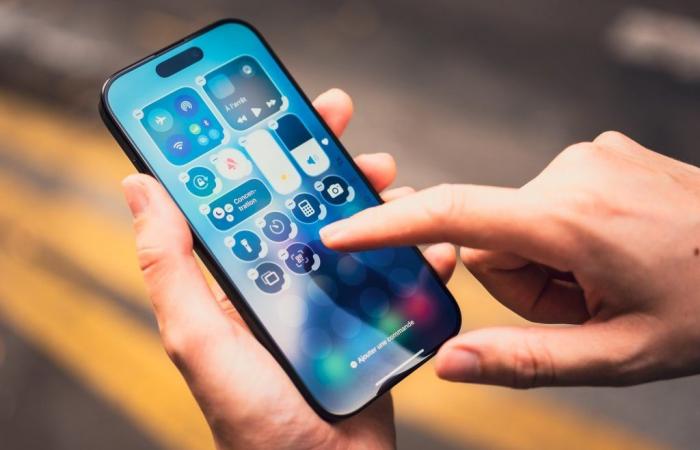The iPhone 16 marks the arrival of Wi-Fi 7, the latest generation of Wi-Fi technology, on Apple smartphones. The 802.11be standard supports the 2.4 GHz, 5 GHz and 6 GHz frequency bands, and promises a more stable connection, better speeds, reduced latency and increased capacity to handle a large number of connected devices in same time.
In theory, the new iPhones should above all offer better Wi-Fi speeds than the iPhone 15 Pro, which is satisfied with Wi-Fi 6E, the previous version of the Wi-Fi protocol. On paper, we were counting on a speed multiplied by more than two. In practice, the leap forward offered by Wi-Fi 7, which was announced at the beginning of the year, is not as noticeable as expected…
Also read: the camera of some iPhone 16 crashes, users blame the new button
Restricted Wi-Fi 7 on iPhone 16s
As noted by our colleagues from DigitaliPhone 16s offer Wi-Fi speeds of up to 1.6 Gb/s. For their part, the iPhone 16 Pro goes up to 1.7 Gb/s. As the media points out after several tests, it is “impossible to exceed 1.7 Gb/s”.
We are a long way from the speeds promised by the protocol. Indeed, the iPhone 15 Pro Max already climbed to 1.6 Gb/s, which is already more or less the same speed as the iPhone 16 Pro, as the tests show. The experiments carried out by Mac4Ever agree in the same direction. The actual Wi-Fi speeds of the iPhone 16 are very far from the theoretical speeds.
The problem does not come from the Wi-Fi protocol. In fact, both media were able to achieve speeds twice as high with other Wi-Fi 7 compatible devices. For example, the Xiaomi T13 Pro exceeds 3 Gb/s .
The mystery of Wi-Fi speeds at Apple
It turns out that Apple intentionally restricted the operation of Wi-Fi 7 on iPhones. By using the internal Wi-Fi diagnostic tool on iPhone, reserved for developers and hidden from ordinary users, we discover that smartphones do not take full advantage of the capabilities of Wi-Fi 7, particularly with regard to the use of the 6 GHz frequency band.
Wi-Fi 7 uses multiple frequency bands to transmit data, including the 6 GHz band, which is newer and less crowded than the 2.4 GHz and 5 GHz bands. This band allows you to enjoy better speeds and lower latency. According to tests, the iPhone 16s use the latest version of the protocol on the 6 GHz band. On the Apple website, we can also read in black and white that “all iPhone 16 models support Wi-Fi 7 in the 2.4GHz, 5GHz, and 6GHz bands”. No surprise there.
On the other hand, they only operate 160 MHz channels instead of the 320 MHz planned. Apple makes no secret of it on its official website. On the board displaying all “Wi-Fi specification details for iPhone models”, Apple clearly shows that the protocol has been amputated…
This means that they cannot reach the full potential of the standard. In other words, the iPhone 16s are limited to half the bandwidth available in Wi-Fi 7 due to a channel width reduced compared to what the protocol provides. Indeed, a A wider channel allows more data to be transmitted simultaneously, increasing connection speeds.
At this time, it is unclear whether this limitation is reserved for units sold in Europe, where the 6 GHz bandwidth is narrower than in the United States. Only the group’s British page has been updated with information regarding the iPhone 16. The American page does not include information on the subject of Wi-Fi 7 for the new iPhones. We will have to wait for subsequent tests, and additional information from Apple, to find out more on the subject.
???? To not miss any news from 01net, follow us on Google News and WhatsApp.
Source :
The Digitals






